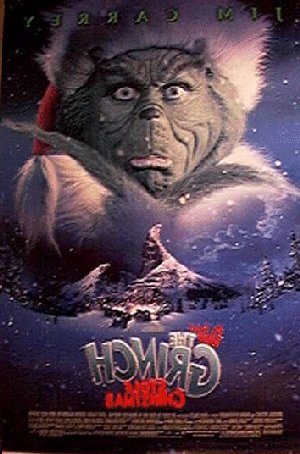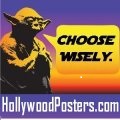The movie industry experimented
with the concept of double siding as far back as the 1950s on
a few major films. Several major films, i.e. Breakfast at Tiffany's
in 1961 and Zulu
in 1964 released a double sided version.
As National
Screen Service relenquished their control of paper distribution
back to the studios, and the studios started eliminating sizes
and restructuring paper distribution, the concept of double
siding arose again.
In the mid-1980's, the
studios reduced the distribution overhead by eliminating window
cards, inserts, half
sheets and drastically cut back on larger paper.
At the same time, the studios
started producing more expensive double-sided posters that gave
a more realistic look.
Studios produced both single-sided
and double-sided printing. The single-sided posters have printing
only on the front side with a white backside, while double-sided
posters have the same artwork on the front and backside. The
artwork on the back is reversed (in lighter shading). Double-sided
posters are normally printed on a thicker paper than are the
single-sided version. These posters are displayed in "light
boxes". Because of the reverse artwork on the back, the
double-sided printing gives a more life-like look to the poster
when a light is placed behind it.
The doubled-sided poster
is the result of a very expensive printing process which involves
running the initial negative through at normal color intensity.
The poster is then reversed and run back through the presses
at a reduced color indensity, such as 30% to 40% of the initial
color. This is why the artwork on the front is more colorful
and detailed than the reverse print on the back.
For example, here is the reverse side
of the one sheet for the film The Grinch:

Doubled-sided posters are extremely
popular with many collectors of newer materials. In fact, because of the
increase in good quality reprints,some collectors will ONLY collect one
sheets that are double-sided, if available, and will pass on their single-sided
counterparts.
Some video
posters are referred to as double-sided. Normally in this case, the backside
of the poster is not just a lighter version of the front side's artwork.
Double-sided video posters have different artwork on each side. The poster
may contain two different versions of the artwork for the same movie, or,
in some cases, the artwork is from two different movies.





